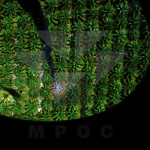Notes from a WTO Committee Meeting
The World Trade Organisation (WTO) Committee on Technical Barriers to Trade (TBT Committee) held the second of three yearly meetings in Geneva from June 15-16, 2016. It addressed concerns about measures proposed or implemented by certain WTO members.
These meetings mainly address specific trade concerns (STCs) – laws, regulations, procedures or other measures proposed or implemented that may be inconsistent with the TBT Agreement, or about which members want more information.
STCs may be recurrently raised for years before the concerned parties) are content with a solution. Unresolved STCs may lead to the initiation of formal dispute settlement proceedings.
The June meeting saw 56 STCs being raised. A number of these are relevant to the palm oil industry, in that they deal with issues relating to the regulation of food and beverages, in particular labelling.
Chile: Food Health Regulation
Mexico, the US and Canada revived a STC – first raised in March 2013 – on an amendment to Chile’s Food Health Regulations. Similar concerns had earlier been raised by Argentina, Australia, Brazil, Colombia, Costa Rica, the EU, Guatemala, Peru and Switzerland as well.
Chile requires a warning message in the shape of a black octagon, like a STOP sign, to be placed on the front-of-pack with the text ‘High in […]’ when food products exceed certain levels of energy, sodium, sugar or saturated fats.
Members are concerned about the lack of scientific basis for, or international agreement on, what Chile’s Ministry of Health defines as a critical nutrient; the use of ‘High in […]’ regarding the presence of certain nutrients; and the use of the image distinguishing such nutrients.
They said the level of nutrient consumption relies on eating habits, and that there are no good or bad foods just by considering nutritional content, because each person has different dietary needs.
The palm oil industry should take special note of the move. Food products with high saturated fats are required to display the STOP sign with effect from July 2016.
Indonesia: Health messages on food labels
This involves a regulation on the inclusion of sugar, salt and fat content information, as well as health messages, on the label of processed foods. The STC was raised by Canada and the EU, but concerns had previously also been raised by Australia, Brazil, Mexico, Switzerland and the US.
The measure is meant to serve as a mandatory health warning label for salt, sugar and fats in all processed food products, but implementation has been postponed until 2019.
Canada was also concerned about the trade impact of the proposal requiring labels of all processed and fast foods to bear warnings regarding sugar, salt and fat content.
Indonesia said it is conducting a study on total diet with respect to sugar, fat and salt consumption among various communities. It added that the measure is guided by various international rules, and that implementation will be further reflected in the technical guidance, which is still being discussed.
Many processed foods contain palm oil. Mandatory health warnings may force or encourage food business operators to switch to other ingredients or deter consumers from using the products.
Ecuador: Labelling of processed and packaged food
This STC was first raised in March 2014, drawing the attention of Brazil, Canada, Chile, Colombia, Costa Rica, the EU, Guatemala, Mexico, Peru, Switzerland and the US.
Ecuador’s measure establishes, inter alia, a system of horizontal colour bars indicating the level of nutrient content, such as fats and saturated fats. WTO members reiterated that no food is good or bad in and of itself, and that there is no scientific foundation for this proposition.
A food can be rich in certain nutrients but lack others, and no food provides all nutritional needs, which is a consequence, instead, of balancing one’s diet. It is important to consider the habits of consumers, portion size and consistency.
Members recalled that the general guidelines in Codex regarding the declaration of properties suggest that no words, illustration or graphics should be used if they could lead to a fear of consuming foods. The use of colour bars does not take the relevant Codex guideline into account, and could, in the eyes of consumers, stigmatise some foods as good or bad.
Observations from meeting
In the general sense, it is apparent which members are most interested in the issues raised. Repeated interventions were made by developed countries such as Australia, Canada and the US. However, strong arguments were also entered by Costa Rica, Guatemala and Mexico.
Notably absent were the views of palm oil producers, who could be affected by legislation requiring burdensome nutrient labelling or use of graphics.
Relevant observations can also be made with respect to the substantive content addressed during the raising of STCs. A core issue is whether there is universal consensus on the effects, and how to address – if at all – the content levels of certain nutrients in food products.
Some members believe they are meeting the legitimate objective of protecting public health by altering how consumers are informed regarding the presence of sugar, salt and fats in food.
However, there is no scientific consensus on this. Portion size and reasonable intake of all nutrients, as required by individuals, is the proper approach, rather than discouraging the consumption of particular foods.
This is a key point that the palm oil industry must emphasise, be it through public literature or through official representation in raising complaints in the WTO fora.
FratiniVergano
European Lawyers










Leave a Reply